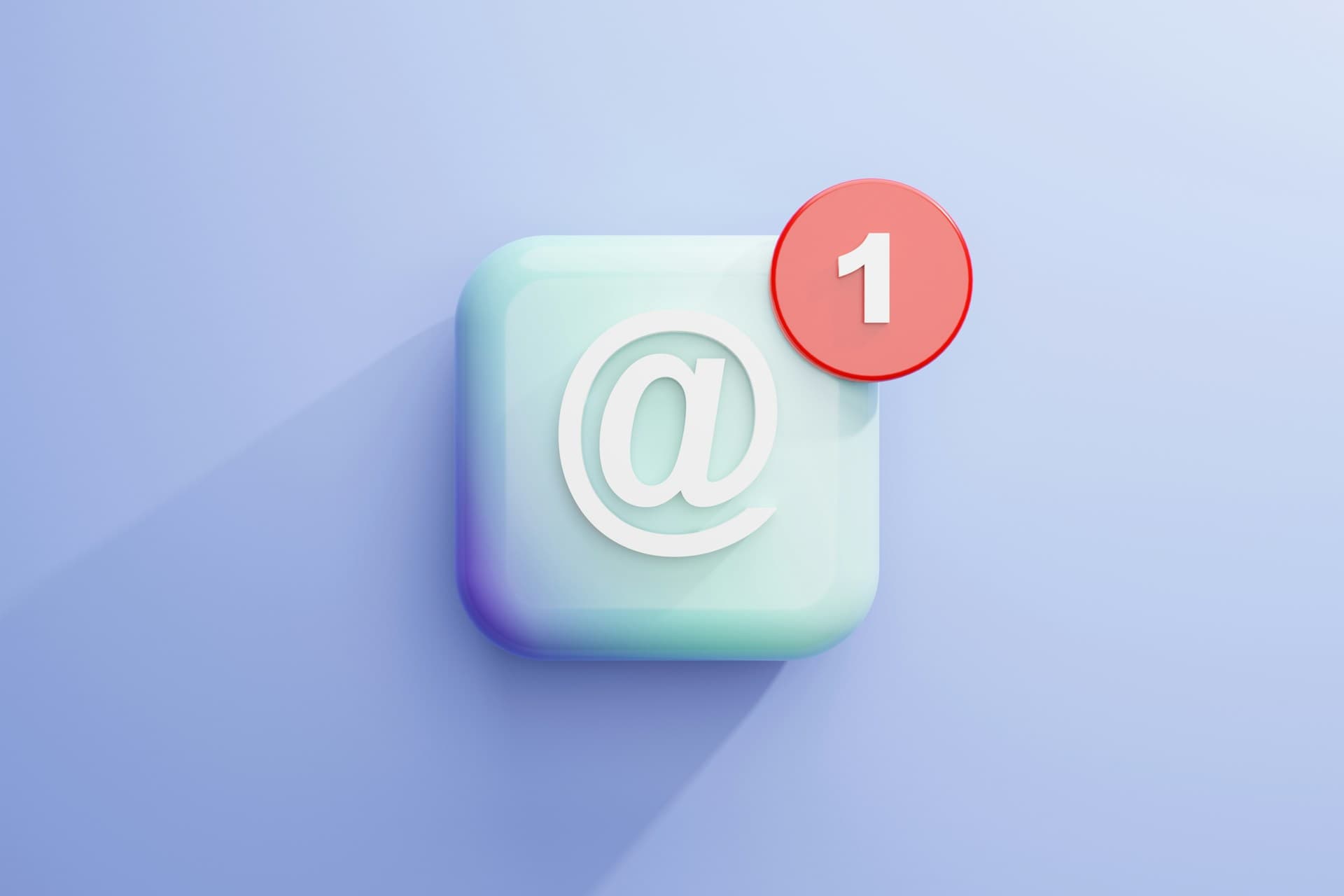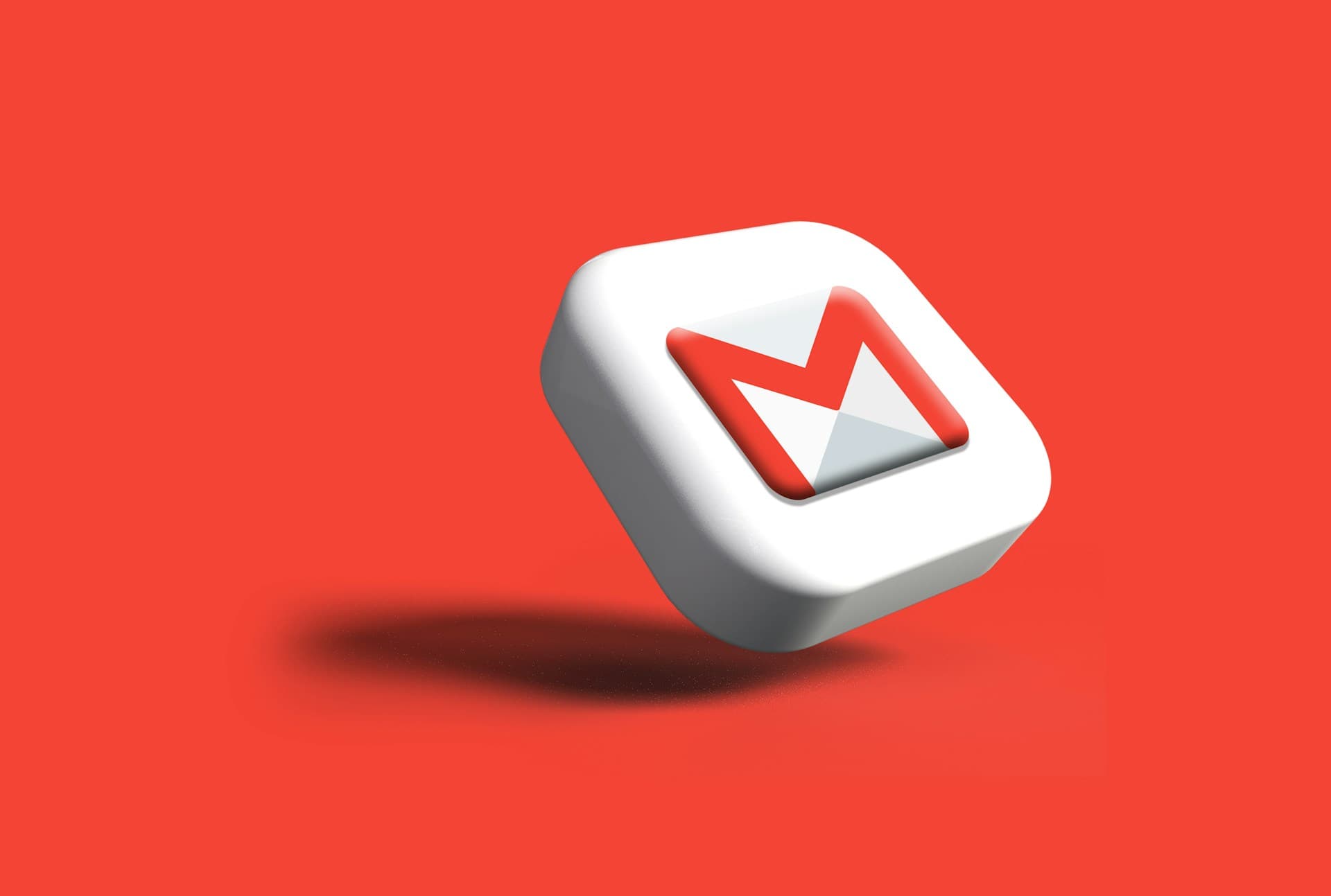Professional email templates: 50+ examples for every situation

You're staring at a blank email. You know what you need to say, but finding the right words takes forever. You rewrite the opening three times. You second-guess your tone. Finally, 15 minutes later, you hit send on a simple two-paragraph email.
Sound familiar?
Writing professional emails doesn't have to be this hard. With the right templates, you can respond in minutes instead of hours — without sacrificing quality or professionalism.
In this guide, you'll find 50+ professional email templates for every common situation. Copy, customize, and send. Let's help you take back your time. For more tips, check out our guide on how to write professional emails.
Why use email templates?
Email templates save time and reduce decision fatigue. Instead of starting from scratch every time, you have a proven starting point that you can personalize in seconds.
Benefits of using email templates:
Save 50-70% of writing time: Templates give you structure and wording instantly
Maintain consistency: Ensure your communication stays professional across all emails
Reduce errors: Tested templates are less likely to have mistakes or awkward phrasing
Lower stress: No more staring at blank screens wondering what to write
Scale your communication: Respond to more people without burning out
The key is to personalize templates. Don't just copy and paste — add specific details that make the email feel personal and relevant.
Introduction email templates
1. Introducing yourself to a new contact
Use when: You're reaching out to someone for the first time
Subject: Introduction — [Your Name] from [Company]
Hi [Name],
I'm [Your Name], [Your Title] at [Company]. I came across your work on [where you found them] and was impressed by [specific thing they did].
I'm reaching out because [reason for contact]. I'd love to [specific request or next step].
Would you be open to [specific ask, e.g., a quick call, grabbing coffee, etc.]?
Best,
[Your Name]
2. Introducing yourself to a new team
Use when: You're joining a new team or company
Subject: Hello from your new [Your Title]
Hi team,
I'm thrilled to be joining [Company/Team] as your new [Your Title]. I wanted to take a moment to introduce myself.
I come from [brief background], where I [relevant experience]. I'm passionate about [what excites you about the role] and I'm looking forward to [what you hope to accomplish].
I'm here to [how you'll support the team]. Please feel free to reach out if you have questions, ideas, or just want to connect.
Looking forward to working with all of you!
Best,
[Your Name]
3. Introducing two people
Use when: You're connecting two people who should know each other
Subject: Connecting [Person A] and [Person B]
Hi [Person A] and [Person B],
I'd like to introduce you two. [Person A], meet [Person B]. [Person B], meet [Person A].
[Person A] is [brief description and why they're relevant to Person B].
[Person B] is [brief description and why they're relevant to Person A].
I thought you two should connect because [specific reason]. I'll leave you both to take it from here!
Best,
[Your Name]
💡 Want AI to write this for you? Quickfix AI reads your emails and generates personalized introduction emails in seconds. Try it free →
Meeting request email templates
4. Requesting a meeting with someone
Subject: Quick call to discuss [topic]?
Hi [Name],
I hope this email finds you well. I wanted to reach out about [specific topic or opportunity].
Would you be open to a 15-20 minute call next week to discuss [what you'll cover]? I'm flexible on timing and happy to work around your schedule.
Let me know what works best for you, and I'll send a calendar invite.
Thanks,
[Your Name]
5. Scheduling a meeting with multiple people
Subject: Finding time for [meeting purpose]
Hi everyone,
I'd like to schedule a meeting to discuss [topic]. The goal is to [what you hope to accomplish].
I've created a poll with a few time options: [link to scheduling poll or list times]
Please vote for the times that work best for you, and I'll send out a calendar invite once we have consensus.
Thanks,
[Your Name]
6. Confirming a meeting
Subject: Confirming our meeting on [date]
Hi [Name],
Just confirming our meeting scheduled for [day, date] at [time]. We'll be discussing [agenda topics].
[Include any prep work or materials to review beforehand]
Looking forward to our conversation!
Best,
[Your Name]
7. Rescheduling a meeting
Subject: Need to reschedule our [date] meeting
Hi [Name],
Unfortunately, something has come up and I need to reschedule our meeting originally planned for [day, date] at [time].
I apologize for any inconvenience. Would [alternative date/time options] work for you?
Thanks for your understanding.
Best,
[Your Name]
8. Canceling a meeting
Subject: Canceling our [date] meeting
Hi [Name],
I need to cancel our meeting scheduled for [day, date] at [time]. [Brief reason if appropriate, otherwise skip this sentence].
[If you want to reschedule: I'd still like to connect — would you be open to rescheduling for [suggest times]?]
[If you don't need to reschedule: I'll reach out when I have more clarity on next steps. Thank you for your understanding.]
Best,
[Your Name]
Follow-up email templates
9. Following up after no response
Subject: Re: [Original Subject]
Hi [Name],
I wanted to follow up on my email from [date] about [topic]. I know you're busy, so I wanted to make sure this didn't get buried.
[Restate your request or question in one sentence]
Let me know if this is still a priority or if now isn't the right time.
Thanks,
[Your Name]
10. Following up after a meeting
Subject: Thanks for the meeting — next steps
Hi [Name],
Thanks for taking the time to meet today. I appreciated the discussion about [key topics].
As discussed, here are the next steps:
[Action item 1 — who's responsible]
[Action item 2 — who's responsible]
[Action item 3 — who's responsible]
I'll [what you'll do next] by [deadline]. Please let me know if I missed anything or if you have questions.
Thanks again!
Best,
[Your Name]
11. Following up on a proposal or quote
Subject: Following up on [proposal/quote]
Hi [Name],
I wanted to follow up on the [proposal/quote] I sent on [date]. Have you had a chance to review it?
I'm happy to answer any questions or discuss how we can tailor this to better meet your needs.
If now isn't the right time, just let me know and I'll follow up later.
Thanks,
[Your Name]
12. Following up after an event
Subject: Great meeting you at [event name]
Hi [Name],
It was great meeting you at [event name] yesterday. I enjoyed our conversation about [topic you discussed].
As promised, [include any follow-up you mentioned — article, resource, introduction, etc.].
I'd love to stay in touch. Feel free to connect with me on LinkedIn: [your LinkedIn URL]
Best,
[Your Name]
💡 Stop writing follow-ups from scratch. Quickfix AI reads your email thread and generates contextual follow-ups instantly. Try it free →
Thank you email templates
13. Thank you after an interview
Subject: Thank you — [Position] interview
Hi [Interviewer Name],
Thank you for taking the time to speak with me today about the [Position] role. I enjoyed learning more about [Company] and the work your team is doing.
I'm very excited about the opportunity to [specific aspect of the role that excites you]. I believe my experience with [relevant experience] would allow me to [how you'd contribute].
Please don't hesitate to reach out if you need any additional information from me. I look forward to hearing from you.
Best regards,
[Your Name]
14. Thank you for a referral or introduction
Subject: Thank you for the introduction to [Name]
Hi [Name],
Thank you so much for introducing me to [Person]. We had a great conversation and [positive outcome].
I really appreciate you thinking of me and making the connection. If there's ever anything I can do to return the favor, please let me know.
Thanks again!
Best,
[Your Name]
15. Thank you for help or support
Subject: Thank you for your help with [project/task]
Hi [Name],
I wanted to say thank you for your help with [specific thing they helped with]. Your [advice/assistance/support] made a huge difference.
[Specific impact: "Because of your input, we were able to..." or "Your suggestion helped me..."]
I really appreciate your time and expertise. Thanks again!
Best,
[Your Name]
16. Thank you after receiving feedback
Subject: Thank you for the feedback
Hi [Name],
Thank you for taking the time to share your feedback on [project/presentation/work]. I appreciate your insights, especially regarding [specific point they made].
I'm going to [how you'll apply their feedback]. I'll keep you updated on the progress.
Thanks again for your guidance.
Best,
[Your Name]
Apology email templates
17. Apologizing for a mistake
Subject: My apologies for [mistake]
Hi [Name],
I wanted to reach out and apologize for [describe the mistake]. I take full responsibility for [what went wrong].
To make this right, I've [steps you're taking to fix it]. Moving forward, I'll [how you'll prevent it from happening again].
I apologize for any inconvenience this caused. Please let me know if there's anything else I can do to address this.
Best regards,
[Your Name]
18. Apologizing for a delayed response
Subject: Apologies for the delayed response
Hi [Name],
I apologize for the delayed response to your email from [date]. I've been [brief reason, e.g., traveling, handling urgent projects, etc.].
[Answer their question or respond to their request]
Thanks for your patience, and please let me know if you need anything else.
Best,
[Your Name]
19. Apologizing for missing a meeting
Subject: My sincere apologies for missing our meeting
Hi [Name],
I'm so sorry for missing our meeting today at [time]. [Brief explanation if appropriate — calendar mixup, emergency, etc.]
I understand your time is valuable and I feel terrible about this. Would you be open to rescheduling? I'm available [suggest 2-3 specific times].
Again, my apologies. I hope we can reconnect soon.
Best,
[Your Name]
Request email templates
20. Requesting information
Subject: Quick question about [topic]
Hi [Name],
I hope you're doing well. I'm working on [project/task] and could use your help with [specific information you need].
Would you be able to share [what you're requesting]? Ideally by [deadline if there is one].
Thanks so much for your help!
Best,
[Your Name]
21. Requesting time off
Subject: Time off request for [dates]
Hi [Manager Name],
I'd like to request time off from [start date] to [end date] for [brief reason if you want to share].
I've made sure that [how you're covering your responsibilities — handoff to colleague, completing urgent work beforehand, etc.].
Please let me know if this works or if you'd like to discuss further.
Thanks,
[Your Name]
22. Requesting a reference or recommendation
Subject: Would you be willing to serve as a reference?
Hi [Name],
I hope you're doing well! I'm in the process of [job search/applying to grad school/etc.] and I was hoping you'd be willing to serve as a reference.
During our time working together at [Company/Project], I learned so much from you, especially [specific thing]. I think your perspective on my [skills/work ethic/achievements] would be very valuable.
I completely understand if you're too busy. Either way, thank you for considering it!
Best,
[Your Name]
23. Requesting feedback
Subject: Would love your feedback on [project/work]
Hi [Name],
I've been working on [project/presentation/document] and I'd love to get your feedback before finalizing it.
[Attach or link to the work]
Specifically, I'd appreciate your thoughts on [what you want feedback on]. If you have time to review by [deadline], that would be great — but no pressure if you're swamped.
Thanks so much!
Best,
[Your Name]
Reminder email templates
24. Gentle reminder about a deadline
Subject: Friendly reminder — [task/deadline]
Hi [Name],
Just a friendly reminder that [task/deliverable] is due on [date]. Let me know if you need any help or if you'd like to discuss an extension.
Thanks!
Best,
[Your Name]
25. Reminder about an upcoming meeting
Subject: Reminder: Meeting tomorrow at [time]
Hi [Name],
Quick reminder that we have a meeting scheduled for tomorrow ([date]) at [time] to discuss [topic].
[Include any prep work or materials to review]
See you then!
Best,
[Your Name]
26. Reminder to complete a survey or form
Subject: Reminder: Please complete [survey/form]
Hi [Name],
This is a quick reminder to please complete the [survey/form] if you haven't already. It should only take [time estimate] and your input is really valuable.
Here's the link: [link]
We'd love to hear from you by [deadline]. Thanks!
Best,
[Your Name]
How Quickfix AI helps
Templates are great, but they still require work: finding the right template, customizing it, checking the tone, and making sure it fits the context.
Instead of:
❌ Searching through 50+ templates to find the right one
❌ Copying and pasting template text
❌ Manually customizing names, dates, and details
❌ Rewriting sections to match your tone
❌ Double-checking that it fits the context
With Quickfix AI:
✅ AI reads the email you're replying to
✅ Understands the context automatically
✅ Generates a personalized, contextual response
✅ Matches your tone and style
✅ Ready to send in one click
Quickfix AI works directly in Gmail, Outlook, and any email platform. No copying, pasting, or searching for templates. Just click once and AI writes the perfect reply. Learn more about AI reply generators.
Common mistakes when using email templates
1. Forgetting to customize
Don't just copy and paste. Templates should be starting points, not finished emails. Always customize names, dates, and specific details to make it personal.
2. Using the wrong tone
A casual template won't work for a formal client. A formal template feels stiff with colleagues. Match the template's tone to your relationship with the recipient.
3. Not proofreading
Just because it's a template doesn't mean it's perfect. Always proofread for typos, awkward phrasing, or details that don't apply to your situation.
4. Overusing templates
Templates are great for common situations, but don't use them for everything. Important, sensitive, or unique situations deserve a custom email.
5. Using overly complex language
Keep it simple. Professional doesn't mean complicated. Clear, concise emails get better responses than wordy, formal ones.
Pro tips for professional emails
Keep subject lines clear and specific: "Quick question" tells them nothing. "Question about Friday's deadline" tells them everything.
Put the most important information first: Busy people skim. Lead with your request or key point.
Use bullet points: They make emails easier to scan and increase the chance your message is read.
End with a clear call to action: "Let me know your thoughts" is vague. "Can you send me the report by Friday?" is clear.
Proofread before sending: Typos undermine professionalism. Read it once before clicking send.
Respond within 24 hours: Even if it's just "I got your email and will respond fully by [date]."
Use "Reply All" sparingly: Only use it when everyone needs to see your response.
FAQs
Should I use email templates for work?
Yes! Email templates save time and ensure consistency. Just make sure to personalize them before sending. Templates are especially useful for common situations like meeting requests, follow-ups, and thank yous.
How do I customize email templates?
Replace placeholders like [Name], [Date], and [Topic] with actual information. Add specific details that make the email personal. Adjust the tone to match your relationship with the recipient. Remove any sentences that don't apply to your situation.
Are email templates unprofessional?
No. Email templates are a productivity tool used by professionals at every level. What matters is that your final email is personalized, clear, and appropriate for the situation.
Can I use AI to write professional emails?
Yes. AI tools like Quickfix AI can generate professional emails based on context. They're faster than templates because they automatically personalize the content for you. Check out our guide on the best AI writing assistants.
What's the best way to organize email templates?
Save templates in a document or note-taking app organized by category (introductions, meeting requests, follow-ups, etc.). Or use an AI tool like Quickfix AI that generates contextual emails automatically.
How long should a professional email be?
Keep it concise. Most professional emails should be 3-5 short paragraphs or 100-200 words. Busy people appreciate brevity.
Should I use formal or casual language in work emails?
It depends on your relationship with the recipient and your company culture. Match their tone. If they're casual, you can be casual. If they're formal, stay formal.
How do I end a professional email?
Common professional sign-offs include "Best," "Best regards," "Thanks," "Sincerely," or "Warm regards." Choose one that feels natural and matches your tone.
Conclusion
Professional email templates save time, reduce stress, and help you communicate more effectively. Whether you're scheduling meetings, following up on projects, or thanking someone for their help, having templates ready means you can respond faster without sacrificing quality.
The key is to use templates as starting points, not finished products. Always customize them to fit your specific situation and relationship with the recipient.
And if you want to save even more time? Let AI handle it. Quickfix AI reads your emails, understands the context, and generates personalized responses automatically — no templates needed.
Ready to try Quickfix AI for email?
See how Quickfix AI helps you respond to emails faster

